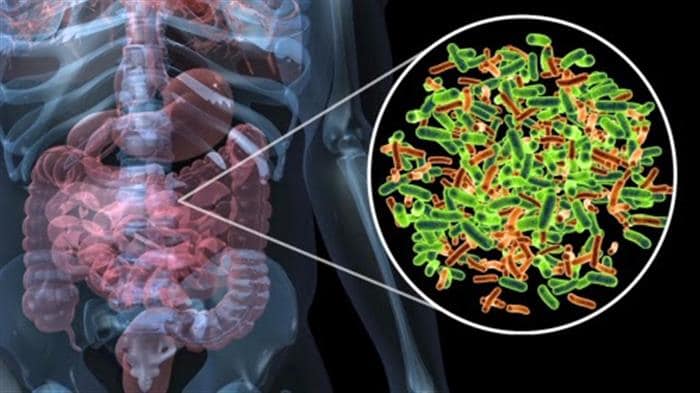Irritable bowel syndrome, or IBS, is a prevalent condition characterized by abdominal pain or discomfort, bloating, connected to altered stool form (such as diarrhea and constipation) as well as passage. Approximately 4 percent to 30 percent of individuals world-wide suffer from IBS. Small intestinal bacterial overgrowth, or SIBO, which was clinically demonstrated in patients with structural abnormalities in the gut, such as ileo-transverse anastomosis, stricture, fistula, slow motility and reduced gut defense, may also be characterized by abdominal pain or discomfort, bloating, flatulence and loose motion. It’s been recognized that SIBO may occur in the absence of structural abnormalities. These patients may be incorrectly diagnosed with IBS, or irritable bowel syndrome.
Contents
How common is SIBO diagnosed in IBS?
Small intestinal bacterial overgrowth has been described as the excessive presence of bacteria, forming 105 units per milliliter on culture of their intestine aspirate. As this is an invasive test, lots of noninvasive techniques like lactulose and glucose hydrogen breath tests (LHBT and GHBT) are broadly used to diagnose SIBO. This issue has been recognized among people with IBS. In a variety of research studies, frequency of SIBO among patients presenting IBS varied from 4 percent to 78 percent, according to Table ?1, more so among patients with diarrhea-predominant IBS. Not only quantitative increase (SIBO) but qualitative change from the gut bacteria (dysbiosis) was reported among patients with IBS. Research studies utilizing antibiotics and probiotics have caused disagreement to care for this disease with lately transplantation which led to a paradigm shift. Nonetheless, it’s essential to understand the wide-variability in frequency of SIBO among people with IBS. A wide-variability in frequency may indicate it is vital to evaluate the evidence carefully to determine whether the association between IBS and SIBO is under-projected in previous research studies.
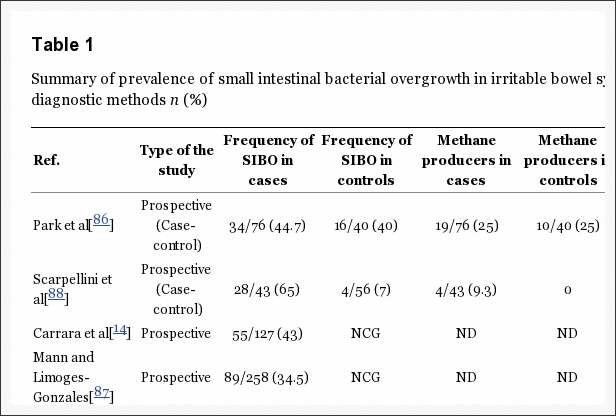
The research studies are examined by people on discordance with the connection between IBS and SIBO as well as their strength and weakness, such as evidence on exploitation of gut flora on indications of IBS and other issues.
Assessment of Studies on SIBO in IBS
Table ?1 summarizes the outcomes among patients with IBS from research studies on individuals with SIBO. As can be noted in the table, the frequency of people with IBS and SIBO varied from 4 percent to 78 percent and from 1 percent and 40 percent among controls. Frequency of individuals with SIBO and IBS was greater than among controls. It might be concluded that SIBO is correlated with IBS. It’s essential to assess the explanations in various research studies.
Critical Evaluation of Studies on SIBO in IBS
Can IBS phenotype determine frequency of SIBO?
IBS is a state that’s heterogeneous. The sub-types may be diarrhea or constipation-predominant or may be alternating. Patients with diarrhea-predominant IBS have organic cause including SIBO compared to other types of IBS. In a study on 129 patients with non-diarrheal IBS, 73 with long-term diarrhea, for example diarrhea-predominant IBS, and 51 healthy controls, frequency of SIBO with GHBT was 11 (8.5 percent), 16 (22 percent) and 1 (2%), respectively. Similar findings are reported in various studies. Diarrheal IBS needs to be evaluated in comparison to other sorts of IBS for SIBO. Research studies that contained percentage of individuals are extremely likely to reveal frequency of SIBO.
Bloating is a symptom commonly reported among patients with IBS. Frequency of bloating has been reported to vary from Asia by 26 percent to 83 percent in research studies on IBS. The pathogenesis of bloating may be correlated with increased quantity of gas in the gut, its abnormal source and improved gut sense in response to distension of the gut. Patients with SIBO may have increased amount of gas inside the gut, so it’s plausible to believe IBS patients with bloating that is noticeable are expected to have SIBO. There is limited data with this specific circumstance. Evidence also demonstrated that both fasting along with post-substrate (e.g., sugar, lactulose) breath hydrogen is considerably higher compared to individuals with IBS compared to controls. Probiotics and antibiotics, which are demonstrated to reduce gas, are demonstrated to ease bloating. It has been noted that treatment can revert hydrogen breath tests back to normal. Patients with IBS, flatulence and bloating should be evaluated for SIBO. More data is involved with this issue.
Can techniques used to diagnose SIBO determine its frequency?
Several techniques are used to diagnose SIBO; including GHBT LHBT,14C breath test, and culture of aspirate. The principle of hydrogen breath tests is summarized in Figure 1. Dietary carbohydrates produce hydrogen in the gut. In patients with SIBO, the bacteria in the small bowel ferment these carbohydrates, producing hydrogen, which gets absorbed and is exhaled in the breath.
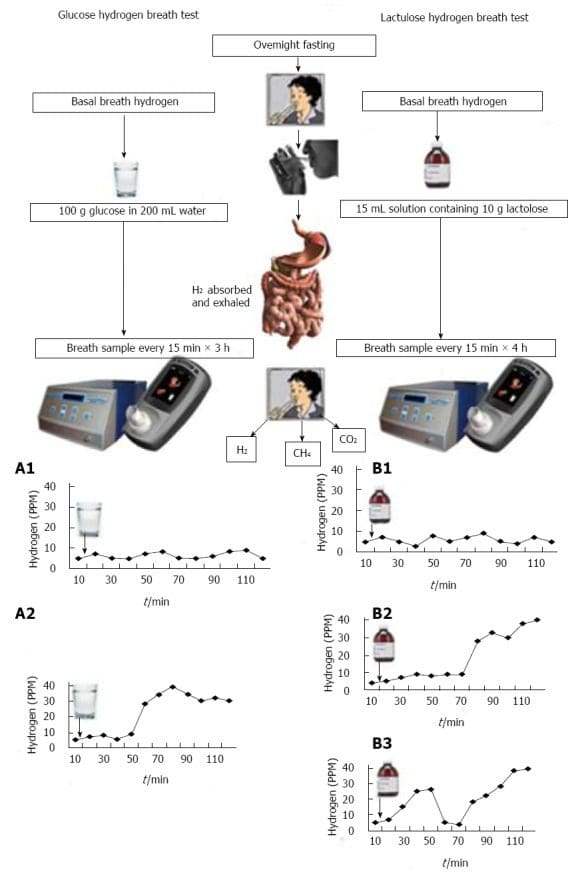
Figure 1
Hydrogen breath test involves giving patients a load of carbohydrate (generally in the sort of glucose and lactulose) and measuring expired hydrogen concentrations in a period of time. Identification of SIBO using hydrogen breath test depends upon the bodily principle of patients with SIBO, glucose may be fermented by bacteria in the intestine resulting in production of hydrogen gas that is consumed and exhaled in expired air (Figure ?1, A1). By contrast, lactulose, which may function as a non-absorbable disaccharide, will produce an early summit due to fermentation in the small intestine (normally within 90-min) or two summit (as a consequence of small intestine fermentation and minute from colon), if SIBO is present (Figure ?1, B2 and B3). There are limits in hydrogen breath test for identification of SIBO. There may be similarities in patients with problems and SIBO employing rapid transit making differentiation difficult. An ancient summit can be positive in people with gut transit time. By way of instance, in a study from India, median oro-cecal transit interval was 65 minutes (variety 40-110 moments) in healthy subjects. In another study from Taiwan, mean transit interval was 85 min. It’s been substantiated in Western individuals recently by simultaneously using LHBT and radio-nuclide method to gauge gut transport. Double summit standards for evaluation of SIBO using LHBT is quite insensitive. Sensitivity of GHBT to diagnose SIBO is 44 percent contemplating the culture of gut aspirate as a regular standard. As a result, it’s estimated that the researchers who used a historic summit standards in LHBT could discover a greater frequency of SIBO among people with IBS along with controls. In contrast, those who would use either GHBT or double summit benchmark in LHBT might locate a minimum frequency of SIBO alike in patients with IBS and controls. It is well worth noting from Table ?1 that the frequency of SIBO among people with IBS and controls on LHBT (early summit standards) varied from 34.5 percent to 78 percent and 7 percent to 40 percent, respectively; in contrast with the frequency GHBT varied from 8.5 percent to 46 percent and 2 percent to 18percent.
Fifteen percent of people might have methanogenic flora in the gut. Methanobrevibacter smithii, Methanobrevibacter stadmanae and perhaps several of those coliform bacteria are methanogens. In these areas, only hydrogen breath tests may not diagnose SIBO, estimation of methane may also be demanded (Figure ?1). Table ?1 shows that 8.5 percent to 26 percent of IBS sufferers and 0 percent to 25 percent of controls exhaled methane inside their breath. Whether methane was not expected in them, SIBO could not have been diagnosed. Methane was not estimated, which could have resulted in underestimation of frequency of SIBO as outlined in a proportion of the research study. Methane production in excess is connected to constipation. Consequently, methane estimation in breath, which is inaccessible in several commercially available hydrogen breath test machines, is particularly vital in patients employing constipation-predominant IBS. Some could have slow transit through the small intestine making prolonged testing as a lot of hours required and many people may not want to undergo such testing. However, a period of testing for them may overlook SIBO’s identification.
The jejunal aspirate culture has traditionally been used as the gold standard to diagnose SIBO, according to Figure ?2. On the other hand, the limitations of this test include invasiveness in addition to the challenges posed by attempting to civilization all strains and species. In fact, usage of air during endoscopy might lead to a false negative impact as anaerobes do not rise when these are exposed to oxygen. Furthermore, a massive percentage of germs are not cultured. By contrast, single lumen catheter passed through the nose or through the biopsy channel of endoscope, may lead to contamination with oro-pharyngeal flora supplying false positive result. Therefore, we left a double-lumen catheter to prevent these oro-pharyngeal contamination (Figure ?2). Studies on SIBO one of patients with IBS using qualitative civilization of small bowel aspirate are scanty (Table ?1). A study by Posserud et al reported that a frequency of SIBO of 4 percent among people with IBS. Taking the result of study using GHBT, the sensitivity of 44 percent to diagnose the intestine aspirate appears to have the incidence of SIBO . More studies are essential on this issue.
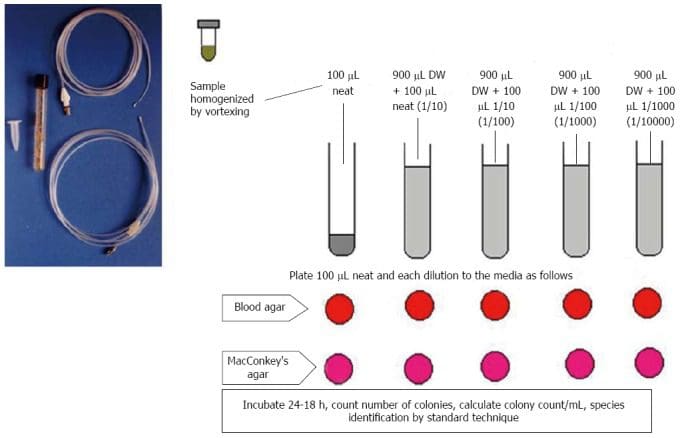
Figure 2
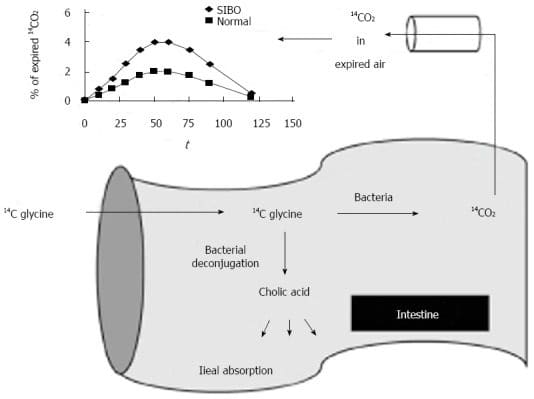
Figure 3
13C and�14C based tests have also been developed based on the bacterial metabolism of D-xylose (Figure ?3). Of acids containing13C and�14C may be used to diagnose SIBO. The glycocholic acid breath test contains the managing of the bile acid14C glycocholic acid, as well as the discovery of14CO2, which may be increased in SIBO (Figure 3), according to the clinical and experimental data from the various research studies on SIBO associated with IBS. While evidence may appear conclusive, further research studies may be required to properly determine the results.
Information referenced from the National Center for Biotechnology Information (NCBI) and the National University of Health Sciences. The scope of our information is limited to chiropractic and spinal injuries and conditions. To discuss the subject matter, please feel free to ask Dr. Jimenez or contact us at 915-850-0900 .
By Dr. Alex Jimenez

Additional Topics: Wellness
Overall health and wellness are essential towards maintaining the proper mental and physical balance in the body. From eating a balanced nutrition as well as exercising and participating in physical activities, to sleeping a healthy amount of time on a regular basis, following the best health and wellness tips can ultimately help maintain overall well-being. Eating plenty of fruits and vegetables can go a long way towards helping people become healthy.

WELLNESS TOPIC: EXTRA EXTRA: Managing Workplace Stress
Blank
References
Close Accordion
Professional Scope of Practice *
The information on "Research Studies on SIBO in Irritable Bowel Syndrome" is not intended to replace a one-on-one relationship with a qualified health care professional or licensed physician and is not medical advice. We encourage you to make healthcare decisions based on your research and partnership with a qualified healthcare professional.
Blog Information & Scope Discussions
Welcome to the wellness blog of El Paso Back Clinic, where Dr. Alex Jimenez, DC, FNP-C, a board-certified Family Practice Nurse Practitioner (FNP-C) and Chiropractor (DC), presents insights on how our team is dedicated to holistic healing and personalized care. Our practice aligns with evidence-based treatment protocols inspired by integrative medicine principles, similar to those found on dralexjimenez.com, focusing on restoring health naturally for patients of all ages.
Our areas of chiropractic practice include Wellness & Nutrition, Chronic Pain, Personal Injury, Auto Accident Care, Work Injuries, Back Injury, Low Back Pain, Neck Pain, Migraine Headaches, Sports Injuries, Severe Sciatica, Scoliosis, Complex Herniated Discs, Fibromyalgia, Chronic Pain, Complex Injuries, Stress Management, Functional Medicine Treatments, and in-scope care protocols.
Our information scope is limited to chiropractic, musculoskeletal, physical medicine, wellness, contributing etiological viscerosomatic disturbances within clinical presentations, associated somato-visceral reflex clinical dynamics, subluxation complexes, sensitive health issues, and functional medicine articles, topics, and discussions.
We provide and present clinical collaboration with specialists from various disciplines. Each specialist is governed by their professional scope of practice and their jurisdiction of licensure. We use functional health & wellness protocols to treat and support care for the injuries or disorders of the musculoskeletal system.
Our videos, posts, topics, subjects, and insights cover clinical matters, issues, and topics that relate to and directly or indirectly support our clinical scope of practice.*
Our office has reasonably attempted to provide supportive citations and has identified the relevant research studies or studies supporting our posts. We provide copies of supporting research studies available to regulatory boards and the public upon request.
We understand that we cover matters that require an additional explanation of how they may assist in a particular care plan or treatment protocol; therefore, to discuss the subject matter above further, please feel free to ask Dr. Alex Jimenez, DC, APRN, FNP-BC, or contact us at 915-850-0900.
We are here to help you and your family.
Blessings
Dr. Alex Jimenez, DC, MSACP, APRN, FNP-BC*, CCST, IFMCP, CFMP, ATN
email: coach@elpasofunctionalmedicine.com
Licensed as a Doctor of Chiropractic (DC) in Texas & New Mexico*
Texas DC License # TX5807
New Mexico DC License # NM-DC2182
Licensed as a Registered Nurse (RN*) in Texas & Multistate
Texas RN License # 1191402
ANCC FNP-BC: Board Certified Nurse Practitioner*
Compact Status: Multi-State License: Authorized to Practice in 40 States*
Graduate with Honors: ICHS: MSN-FNP (Family Nurse Practitioner Program)
Degree Granted. Master's in Family Practice MSN Diploma (Cum Laude)
Dr. Alex Jimenez, DC, APRN, FNP-BC*, CFMP, IFMCP, ATN, CCST
My Digital Business Card

